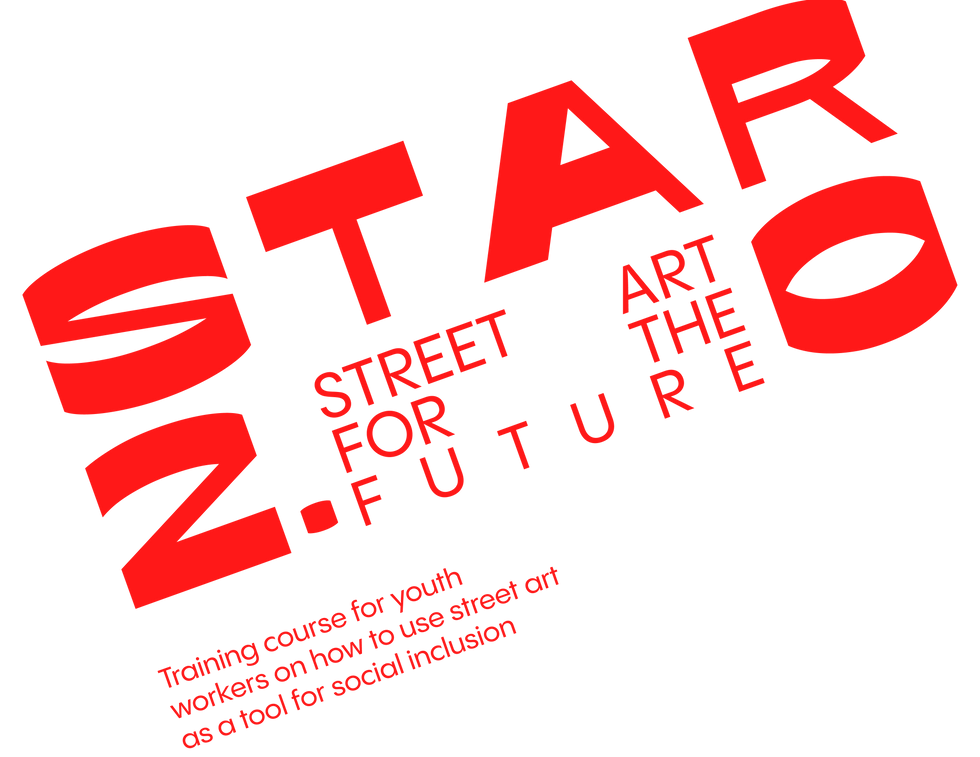
STAR 2.0 - Street Art for the Future
Training course for youth workers on how to use street art as a tool for social inclusion
Globalisation trends and current challenges fuel existing socio-economic inequalities further increasing situations of poverty and marginalisation, resulting in limited educational opportunities and reduced social mobility for those living in disadvantaged areas. To counter these trends, the STAR 2.0 - Street Art for the Future -Training course for youth workers on how to use street art as a tool for social inclusion project aims to promote the social and civic inclusion of young people with fewer opportunities through the use of street art.
To ensure an effective and lasting impact, the main objective of the project is to support youth workers on how to better use street art to engage youth with fewer opportunities and, consequently, foster their active role within local communities. Street art is considered as a tool for social inclusion, which fosters creative learning and decreasing the risk of intolerance, social exclusion and civic disengagement, as well as, an opportunity for the targeted youth to express their ideas through artworks and take an active stance in the civic life of their local contexts.
STAR 2.0 also aims to raise awareness of the innovative use of street art as an educational tool to give new life to degraded areas and ultimately foster a greater sense of solidarity and civic engagement within local communities.

Project Description
Globalisation trends and current challenges fuel existing socio-economic inequalities further increasing situations of poverty and marginalisation, resulting in limited educational opportunities and reduced social mobility for those living in disadvantaged areas. To counter these trends, the STAR 2.0 - Street Art for the Future -Training course for youth workers on how to use street art as a tool for social inclusion project aims to promote the social and civic inclusion of young people with fewer opportunities through the use of street art. To ensure an effective and lasting impact, the main objective of the project is to support youth workers on how to better use street art to engage youth with fewer opportunities and, consequently, foster their active role within local communities.
In collaboration with experts, the consortium will develop a specific curriculum on street art and social inclusion, outlining current use in local contexts and recommending best practices.
In addition, this knowledge will also be targeted at youth workers through online training opportunities, outlining possible topics, tools and techniques to better engage young people through street art activities. An innovative community platform will also be set up to give youth workers the opportunity to share results and exchange good practices in the field. Finally, the young people involved will have the opportunity to collaborate with experienced street artists and create artworks within their local communities, thus participating in and enriching the cultural life of their communities.
Indeed, street art is considered as a tool for social inclusion, which fosters creative learning and decreasing the risk of intolerance, social exclusion and civic disengagement, as well as, an opportunity for the targeted youth to express their ideas through artworks and take an active stance in the civic life of their local contexts.
STAR 2.0 also aims to raise awareness of the innovative use of street art as an educational tool to give new life to degraded areas and ultimately foster a greater sense of solidarity and civic engagement within local communities.




